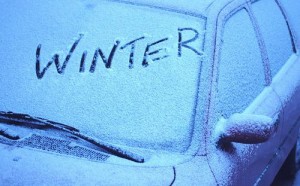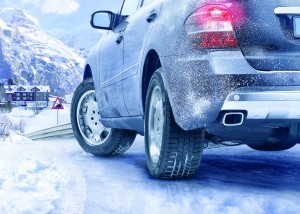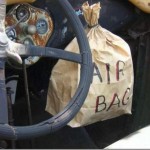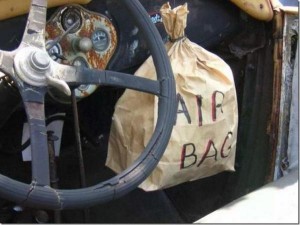Baton down the hatches because it’s about to get chilly! Forecasters have warned that Ireland is facing its coldest winter in years, with sub-zero temperatures, polar gales and heavy snowfall expected to sweep across the country over December, January and February.
That’s obviously going to impact on driving conditions and your car. With that in mind it’s worth asking yourself whether you’re prepared for any winter emergencies. We’ve prepared a checklist for both practical and essential items to have in your car should the winter conditions get the best of your vehicle.
Winter Driving Safety – Practicals
Blanket / Gloves: Should your car break down in the back of beyond, you might want to conserve fuel and battery power (if you still have any that is). Keep a blanket and gloves tucked away in the boot and stay warm while you wait for help to arrive.
Shovel: Even a small folding shovel will do the trick if you get wedged in by snow.
Wind-up phone charger: If the battery in your car and phone is dead, and you’re stranded in the middle of nowhere, a wind-up charger might just turn out to be one of the soundest purchases you ever made.
Winter Driving Safety – Essentials
Warning Lights: Poor visibility during the winter months make road-side break downs that bit more hazardous. A Warning Triangle at least increases your visibility when pulled over.
Snow Socks: Give your car extra grip in snow and ice. Light and easy to fit. Can be kept in the car when not in use. Available in 5 sizes, these snow socks fit hundreds of different tyres. Fits on the cars drive wheels.
De-Icer: Essential and self-explanatory. Can also be used in emergencies to de-frost frozen car parts.
Ice Scraper: Stating the obvious…
Jump Leads: Battery failure is the most common cause of breakdowns and the likelihood of that happening increases during the winter months. Be prepared.
Hi-Vis Vest: In a scenario where you might be required to carry out some road-side repairs having a Hi-Vis vest is essential, especially when doing so in difficult-to-see winter conditions.
Torch: Essential if you need to get under the hood in the dark.
Screen Wash: As well as removing dirt, grime and insect deposits, Screen Wash also helps prevent freezing.
Improving Your Cars Winter Performance
Winter Tyres: A complete new set of winter tyres (where the rubber is optimized to stay flexible during cold snaps as opposed to regular tyres which turn hard and slippery) might sound expensive. However, in reality, if you spend a lot of time on the road during the winter months it’s a worthwhile investment. And besides, while you’re driving around on the winter tyres, the regular set isn’t being used and worn down.
Check your battery: While it’s always advisable to have a professional check your battery, there are a few ways even a novice can carry out a routine check and maintenance. Look out for corrosion on posts and cable connections and scrape away where necessary. Give the surfaces a clean and retighten all connections. If you can remove the battery caps check the fluid level monthly.
Wiper Blades / Fluid Levels: Rubber cladded wiper blades are best suited for scraping ice from the windscreen. In addition to this, ensure you have refilled your windshield washer reservoir with wiper solvent and keep plenty on hand. You can really go through it in large quantities during the winter months.
Bulbs / Lighting: Replace any fading or burnt out bulbs while also regularly removing grime from the lenses.
Brakes: Finally, and MOST IMPORTANTLY, check your brakes.









